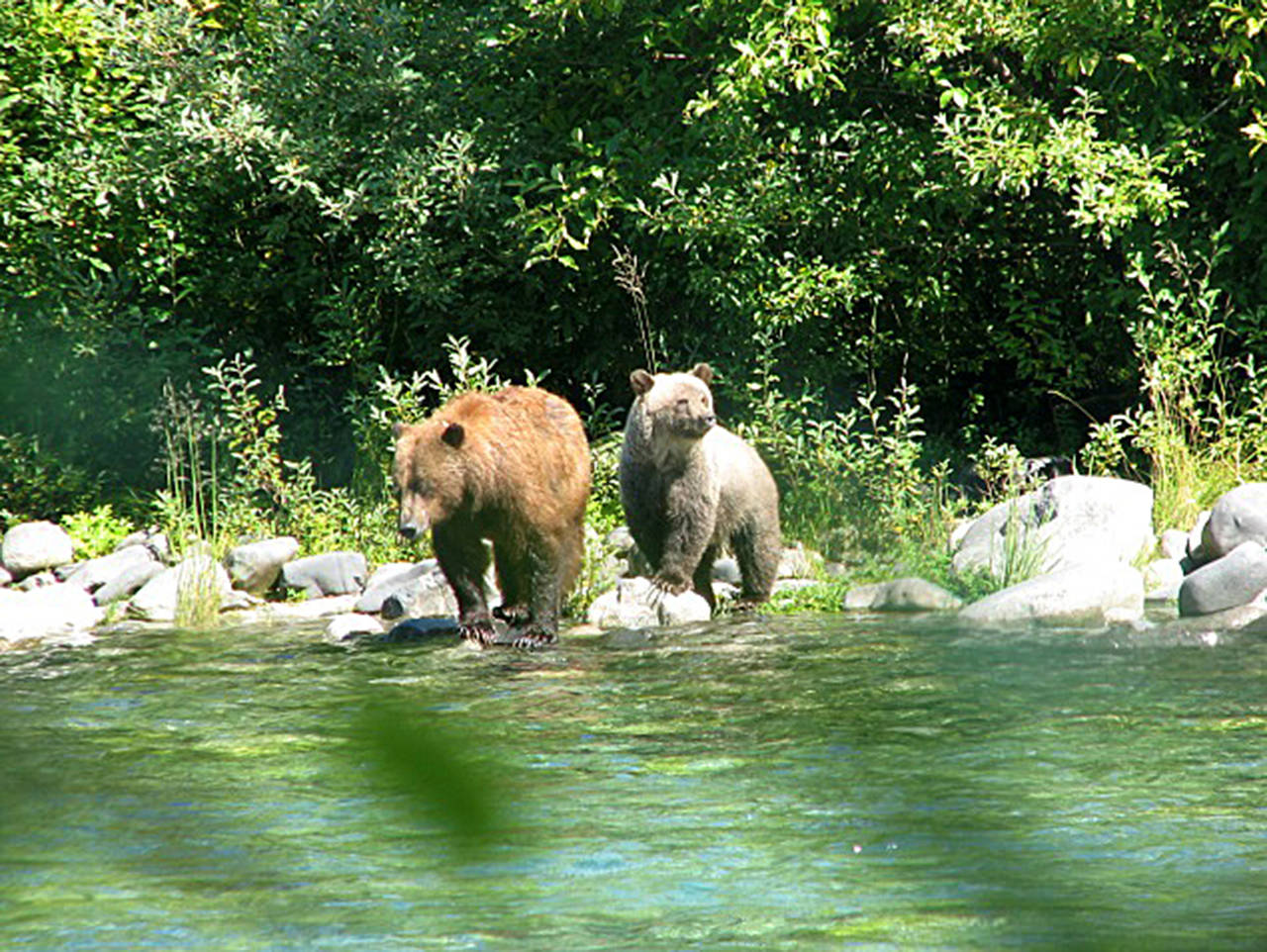By The Herald Editorial Board
More than a week has passed since Ryan Zinke, U.S. Interior secretary, came to Sedro-Woolley to announce the restart of a review of plans to reintroduce grizzly bears to the North Cascades ecosystem, news that surprised supporters and opponents of the proposal.
The former Montana congressman, during his term in the Trump administration, has not endeared himself to most conservationists and recreationalists, specifically for his proposal to shrink four national monuments, including Bear’s Ears National Monument in Utah; a plan to nearly double the entrance fees at many national parks; and an apparent department decision last December to halt consideration of the grizzlies’ return to the North Cascades.
If it wasn’t a change of heart by Zinke, his clear support for, in his words, “the great bear,” was not expected.
“Let me catch my breath,” said Mitch Friedman, executive director of Conservation Northwest. “Nixon went to China. Zinke is going to bring the grizzly bear back to the North Cascades.”
It’s news that won’t be met with the same enthusiasm among many residents and others who live near and still try to make a living from the national forests and other lands of the North Cascades, in particular, the Snohomish County towns that border those forests, such as Darrington and Sultan, which played host to public meetings on the restoration last year and earlier.
But that’s why the “Nixon to China” comparison is important.
Zinke, and the Interior agencies conducting the plan review — the National Park Service and the U.S. Fish and Wildlife Service — will need to complete the review of proposals with the same or greater level of transparency and community involvement as was used earlier in the process. And when a decision is made later this year, Zinke and those agencies will need to reach out to communities to explain the details of the repopulation effort and address concerns.
Supporters and skeptics should also consider work now ongoing in the Greater Yellowstone Ecosystem where grizzly populations have rebounded from fewer than 150 bears bears in the 1970s to about 700 as of 2016. That growth has increased conflicts with people and with ranchers. But, as detailed in a Washington Post report from last November, there are groups successfully working to limit the conflict between the grizzlies and livestock, hikers, hunters and others in the outdoors.
If the program is a success, those who go into the deep forests where bears will be relocated will need to be mindful of their potential presence and take precautions that respect the dangers that already exist in the wilderness.
Since the start of this decade, there have been 11 fatal grizzly bear attacks in North America, two of them in Canada. But there were also nine fatal black bear attacks, six in the U.S. and three in Canada. Yet in the span of a few weeks this winter, six people died in avalanches in the Cascades.
When the review of the reintroduction was halted late last year, the agencies had begun consideration of more than 126,000 public comments. Those comments, paired with scientific and other data collected, are intended to devise a plan that works for the communities and other interested groups as much as for the bears.
Currently, there are believed to be fewer than 10 bears in the North Cascades ecosystem, the 9,800-square mile region that includes the North Cascades National Park and the national forest and other public land that surrounds it.
Three options offer different rates of reintroduction. Depending on the rate of relocation of bears from other regions in the West, the plans seek a self-sustaining population of 200 bears that would take as few as 25 years or as as long as a century to build; a fourth no-action option calls for habitat improvements that could aid in recovery but would not use relocation of bears to give restoration efforts a jump-start.
By comparison, the Greater Yellowstone Ecosystem’s population of about 700 bears occupy about 35,000 square miles within Yellowstone and Grand Teton national parks and the region’s national forests in Wyoming, Montana and Idaho.
This is why grizzly bears should return to the North Cascades: The bears were native to the region, as they were throughout much of the West, until hunted here to near extinction in the late-1800s. Since then, the ecosystem has been without an important part of its ecology. The North Cascade’s forests are less without them.
Zinke made this point himself.
“The loss of the grizzly bear in the North Cascades would disturb the ecosystem and rob the region of an icon,” he said.
Give Zinke credit for coming to the Mount Baker-Snoqualmie National Forest’s headquarters in Sedro-Woolley to announce the restart of the review.
We hope he’ll make a return trip to visit North Cascades communities when a final plan is ready for adoption.
Talk to us
> Give us your news tips.
> Send us a letter to the editor.
> More Herald contact information.

























